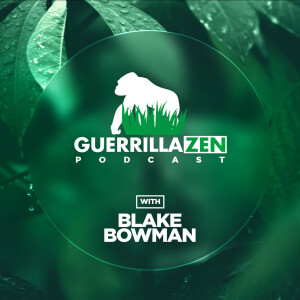
Mastering Medicinal Mushroom Quality with Jeff Chilton
 2020-01-13
2020-01-13
Jeff Chilton has a company called Nammex, established in 1989, that sells organically-certified medicinal mushrooms. His personal experience in the mushroom industry has been expanding since 1973 and he has also co-authored and published an authoritative book on mushroom growing called The Mushroom Cultivator: A Practical Guide to Growing Mushrooms at Home. Jeff talks to your host Blake Bowman about how to spot low quality mushroom products, the difference between mushrooms and mycelium, how mushrooms are typically grown, and many important industry facts that he has learned during his lengthy journey.
Episode Highlights:
- Jeff Chilton talks about his experience in the mushroom industry since 1973.
- What is Jeff’s opinion on the state of the mushroom industry in terms of quality?
- Mushrooms have spores instead of seeds that form a network called mycelium.
- Mushrooms in North America are grown indoors in large barns or concrete warehouse rooms.
- Jeff explains why he can’t sell mushrooms as a supplement in North America.
- China is growing 12 different mushroom species, about four times the amount as in the United State.
- Mycelium in the United States is being grown onto the sterilized grain.
- Jeff is selling fruiting body extracts.
- What should you look for to verify a true mushroom product:
- Read the supplement fact panel to see if there are grains in the product.
- Does the company grow mushrooms?
- Mushrooms have spore, mushroom, and mycelium.
- Mycelium does not produce the same compounds that mushrooms do.
- If your reishi product doesn’t taste bitter than something is wrong.
- Why is the substrate that reishi grows on important?
- Most medicinal mushrooms grow on wood.
- Mushrooms are very dependent on what they are growing on for nutrients.
- Jeff Chilton talks about a mushroom study that he performed in 2015.
- In 1978, the FDA came out with a compliance document regarding mycelium.
- Last year Nammex spent $150,000 on testing.
- Jeff discusses why no company actually does the kind of analysis that they do.
- Where are some great mushrooms growing in the United States?
3 Key Points:
- Nammex is not only growing mushrooms organically but he is growing them on the proper substrate, akin to the soil, improving their medicinal quality.
- Mushrooms need high humidity and a regulated temperature if you are growing them commercially.
- China grows 85% of the world’s mushrooms.
Tweetable Quotes:
- “In 1983 I published a book called The Mushroom Cultivator: A Practical Guide to Growing Mushrooms at Home. Which, believe it or not, it’s still selling 5000 copies a year.” - Jeff Chilton
- “I went to China with OCIA to have the very first organic certification webinar or basically organic certification workshop for mushrooms in China in 1997.” - Jeff Chilton
- “Mushrooms and fungi are not plants. They are not animals. They actually have their own kingdom, which is right in between. So it is really a separate organism from what we are used to.” - Jeff Chilton
- “I realized as a mushroom grower that I cannot grow mushrooms in North America and sell them as a supplement.” - Jeff Chilton
- “Mushrooms, like most vegetables, are 90% water.” - Jeff Chilton
- “No actual mushroom is commercially grown on grains. Grains are a very unnatural material to grow a mushroom on.” - Jeff Chilton
Resources Mentioned:
- GuerrillaZen.com
- Get Complete Essentials at BSLNutritionshop.com
- Nammex website: https://www.nammex.com/
- Jeff Chilton’s Book: The Mushroom Cultivator: A Practical Guide to Growing Mushrooms at Home
More Episodes
 2019-01-30
2019-01-30
Create your
podcast in
minutes
- Full-featured podcast site
- Unlimited storage and bandwidth
- Comprehensive podcast stats
- Distribute to Apple Podcasts, Spotify, and more
- Make money with your podcast
It is Free
- Privacy Policy
- Cookie Policy
- Terms of Use
- Consent Preferences
- Copyright © 2015-2024 Podbean.com




